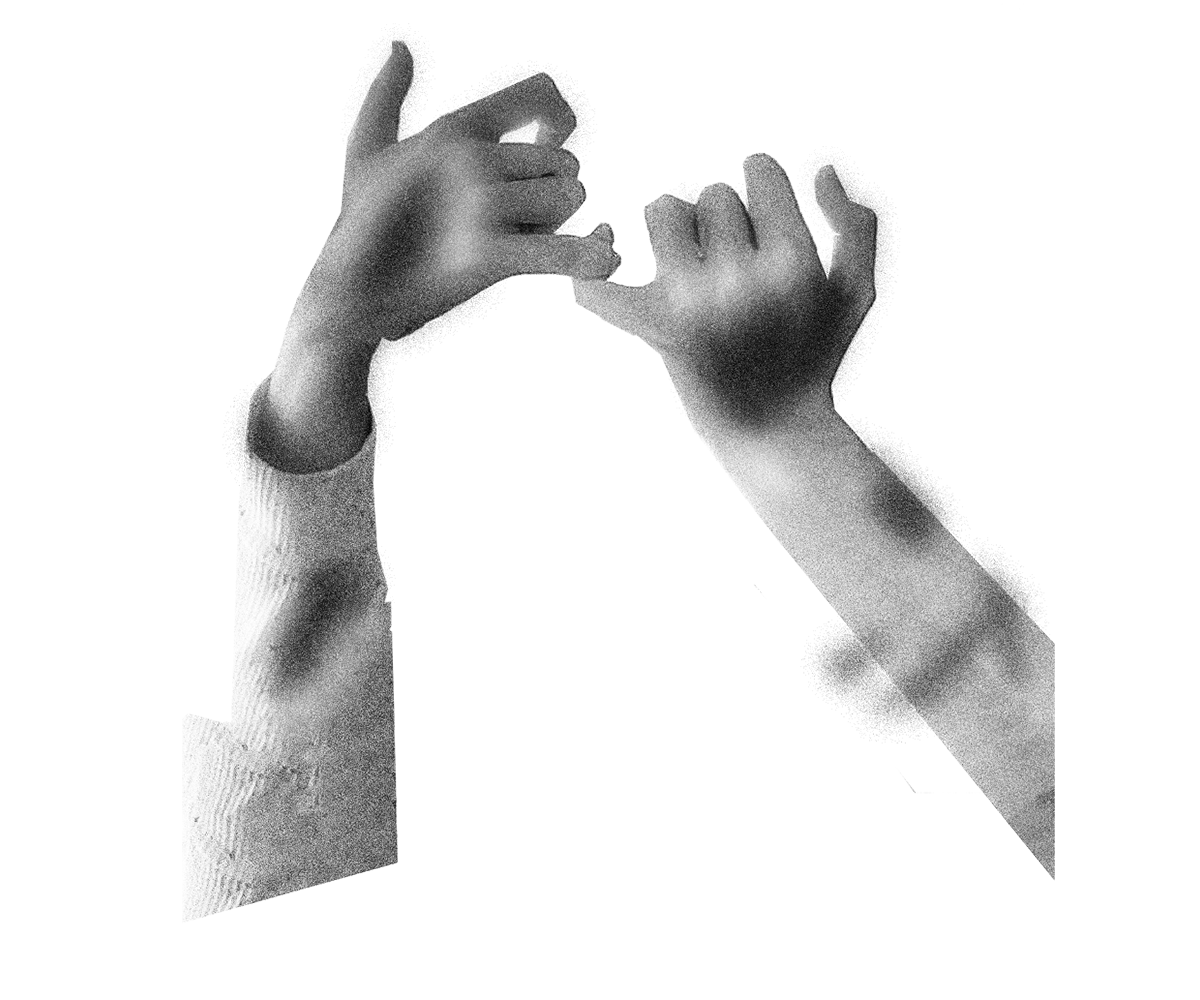Click explores the digitization of social capital and how social rituals are translated online. Speculating on the efficacy of these processes as well as their effects on real social networks
and community trust.
SCENE:
Do Americans have friends? Yes, of course, we do, just less so than any previous generation. Over the last century, we have seen a dramatic loss in social capital or the value of social networks and general trust amongst individuals in a community. With no resolution in sight, we are experiencing what the U.S. Surgeon General described as a loneliness epidemic. Social capital, as defined by Robert D. Putnam in his analysis of the American social landscape Bowling Alone, is vital for the function of society and the general contentment of the population
Social capital is measurable through percentages of people serving on committees in local organizations, civic and social organizations per 1000 population, mean number of club meetings, and general participation in public affairs. Television, an increase in secularism, urban sprawl, and the pressures of modern society and capitalism have pushed Americans into investing in private leisure rather than public, bond-making activities. Digitality didn’t kill the American social scene, this general decline in participation has been observable for decades, but it certainly didn’t help. A quarter of Americans report that they feel isolated. This pervasive loneliness exists, not because of an overall loss of close ties, but because of a general trend toward community isolation and individualism. While our social networks are more observable than ever, we are less connected with neighbors and mutuals alike.
Television privatized leisure amongst the public. Instead of going to a movie theater or a sports game with friends, we retreated to the home to consume entertainment with family. A trend only exacerbated by personal devices such as smartphones. Now, instead of gathering in front of the TV with families, our viewing parties are confined to one. The frequency of picnics decreased by 60% between 1975 and 1999. Rates of going out to bars, nightclubs, discos, and taverns decreased by 40-50%. As a whole Americans are retreating into the home, we go out to dinner less opting instead for fast food, go out less, and stay in more.
While social capital is mostly measured by formal metrics of civic engagement, informal relationships are a pivotal piece of understanding loneliness. The making and keeping of informal ties mark the difference between isolation and social contentment. How then in the age of digitality, social networks, and instant communication might we experience and maintain platonic relationships? Julie Beck defined the 6 forces that fuel friendship as attention, intention, imagination, grace, and ritual. While our inclination for the online impacts all these classifications, ritual has the potential to become the most pervasively digital.

RITUAL
Social rituals are actions performed regularly or repetitively by a set of rules to maintain or strengthen relationships. They vary in formality, function, and ubiquity but as a whole are performed to establish public social proof or to reinforce existing bonds. Some are baked into everyday interactions like asking someone about their day before making a transaction, offering a handshake upon first meeting, or waving at an acquaintance when passing on the street. Rituals in close bonds are more specific. Rituals amongst close friends tend to get more specific. Forged through quality time and individual interests they reflect the intention, imagination, and attention of their bonds.
 Every Friday for four years my friend would come over for sushi with my parents and we would gossip and draw until 9:30 when I would walk her across the street back to her house. Now that we live together when we catch each other between classes I’ll make coffee and we’ll talk about our latest critique until someone gets too tired and has to nap. Throughout college my other friend and I have developed an intricate ritual of mock-checking the studio vending machine before unanimously deciding to go to the deli for a diet Coke, Ito En jasmine tea, and kettle-cooked salt and vinegar chips. These rituals are vital to the maintenance of friendship, not because of the specific actions, but because we are choosing to follow the conventions we have established as friends. The value is in the intention and repetition.
Every Friday for four years my friend would come over for sushi with my parents and we would gossip and draw until 9:30 when I would walk her across the street back to her house. Now that we live together when we catch each other between classes I’ll make coffee and we’ll talk about our latest critique until someone gets too tired and has to nap. Throughout college my other friend and I have developed an intricate ritual of mock-checking the studio vending machine before unanimously deciding to go to the deli for a diet Coke, Ito En jasmine tea, and kettle-cooked salt and vinegar chips. These rituals are vital to the maintenance of friendship, not because of the specific actions, but because we are choosing to follow the conventions we have established as friends. The value is in the intention and repetition.
Making friendship bracelets, creating a secret handshake, and creating nicknames are cultural cornerstones of friendship proof or public verification of association. Developing an understanding that you are making a conscious investment in the friendship and betting on its longevity. When you are weaving threads or stringing beads for someone you care about, exchanging mementos, and attaching them to their person you are making a commitment. Not only to take the time to make something in a pattern and color you think someone you love will like, but to create and maintain a public declaration of friendship for as long as the object lasts. It’s troublesome to untie friendship bracelets, heat and moisture fuse fibers, you have to cut them off. Making a friendship bracelet is a ritual, but wearing it is social proof. A declaration of association, a staking claim, and in a way a demonstration of popularity. Before we had followers we had stacks of colorful woven threads.

To execute the coordination and synchronization of a secret handshake you must reach a level a level of coordination and practice that only exists in uninhibited and devoted friendships. Their complexity and ease of performance are a measure of not only time spent together but also a general demonstration of willingness to do something sincere and a bit ridiculous with another person. They fulfill all 6 forces of attention, intention, imagination, grace, and ritual.
It is no surprise that these rituals are primarily practiced by children. As we age we are often confined to the web of our own lives. Married couples spend less time with friends, as we settle down we exchange informal ties for structured relational systems. And with the overall decline in formal community structures, adults spend more time in the home than ever. We lose small gestures of platonic love and today are more than ever pulled into our private spheres.
TELECOMS:
We are all aware that the Internet is not a replacement for real-life social interactions. As stated by Robert Putnam: “Telecommunication and conventional forms of social connectedness were complements, not alternatives”. Cyber rituals, however, are becoming the standard for social proof. Where preteens might have once spent afternoons meticulously tying string, they can now add each other to a private story, share their locations, and post photos with their friends and on the surface be satisfied with this social proof. The issue with these rituals lies in their simplicity. Digitality is optimized for maximum efficiency and profit, removing the experiential aspect of ritual.
While recurring rites like keeping a streak on Snapchat require the exertion of periodic maintenance, they are still less time and effort-intensive than physical traditions, and corporations like Snapchat have a vested interest in you believing your relationships are defined by the number following a fire emoji. Purposefully creating highly addictive social feedback loops by gamifying friendship. Instead of intimacy, there is a heightened sense of performance. Social proof without the intentionality of ritual drains our social batteries without satisfying the desire for closeness.

NEIGHBORS AND STRANGERS:
Digital optimization removes friction that deepens in-person interactions and loosens responsibility between peers. It’s too easy to ghost, cut off conversations, or remove someone from contacts or socials. While you might run into someone on the street after dodging their calls or flaking on plans, it is simple to remove someone from your story and claim you haven’t opened instagram after not replying to a message. The most profound losses in the digital space are not close ties, but weak ties or relationships we maintain through generalized reciprocity amongst communities. Thin trust, or trust amongst unacquainted members of a community relies on existing social networks and a level of reciprocity reinforced by loose community recognition. By virtue of lack of privacy online, digital networks offer the names and faces of members of your social network. While anonymity is an option, you have to opt-in to the spectacle of a personal social media profile to interact with members of your peer group. You can instantly identify whether someone has mutuals or bonding ties like school affiliation, town, or profession based on their profile.
Robin Dunbar theorized that humans have a cognitive limit of 150 people with whom they can maintain social relationships at one time. The median amount of Instagram followers is 193, but it is extremely common for the average college student to have upwards of two thousand, but are these netizens even part of your social network? How likely are you to trust someone who approached you on the street with no acquaintance or information? What if you could go through their profile and find every ounce of connection to that person? What then happens to your neighbors who you don’t have these bonding ties with? They go from community members to strangers.
and reciprocity will not develop.”
WHAT NOW:
There is little nuance in metrics. In the digital space where social networks are trackable through follows, tags, and comments it is tempting to build a social framework based on engagement. You might be considered a bad friend for forgetting to comment support on a friends selfie, but not for flaking on plans the day before. While romantic relationships come with a level of defined expectation, friendships are much looser. Often lacking a definite start or end, we have little structure for what we are owed in our platonic relationships and the fluidity afforded by virtuality blurs our expectations further. The overwhelming amount of communication that we all experience can make social maintenance feel like a burdenensome performance. So how can we better use the internet as a tool nurture our friendships? Deliberate effort and an understanding of Beck’s forces that fuel friendship are a way to start. Intentinality and a concentrated effort to create your own rituals, even if digital to build your own web of trust between each other.
Use the BFF bracelet generator to create a bracelet for your friend, press [s] and input the file below
[MAKE A BRACELET]

A SPECIAL THANKS TO DAISUKE ENDO, MIANWEI WANG, + MY FRIENDS
THE OTHER HALF OF MY ORANGE